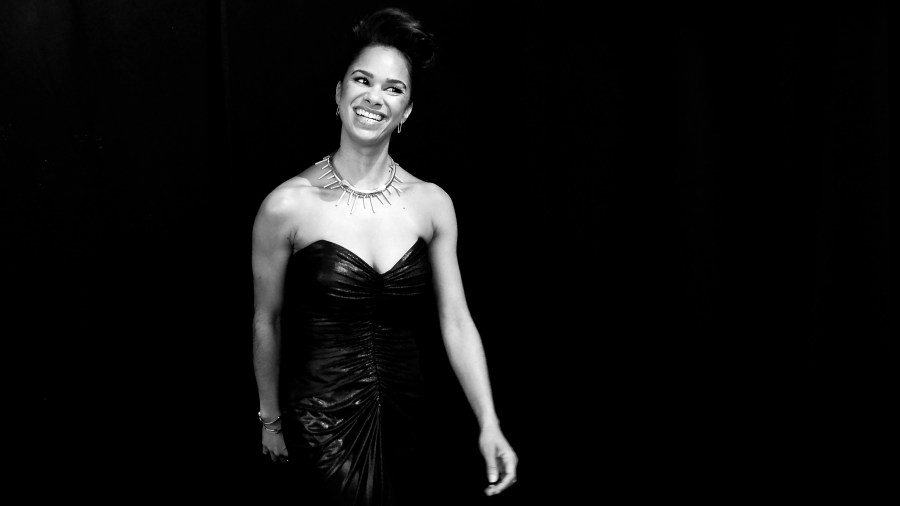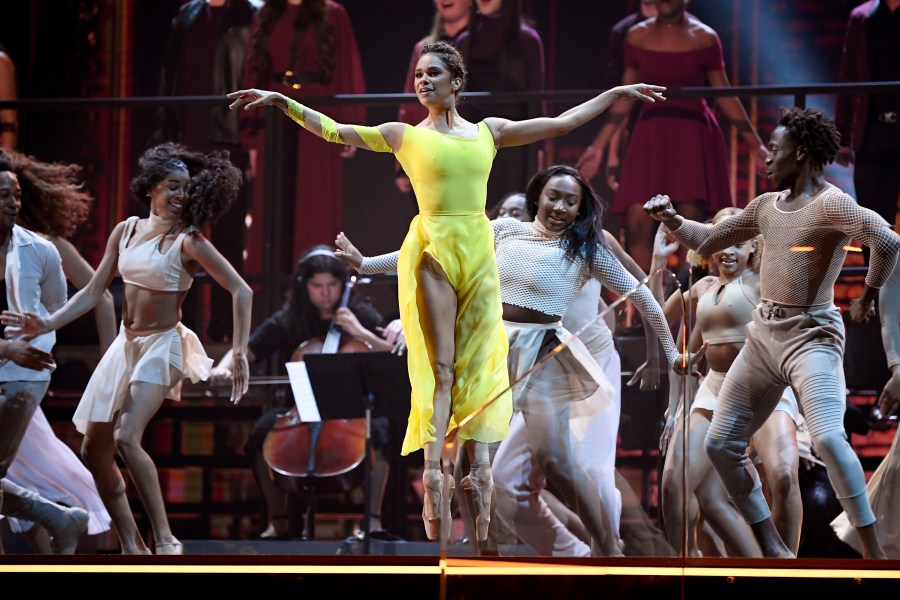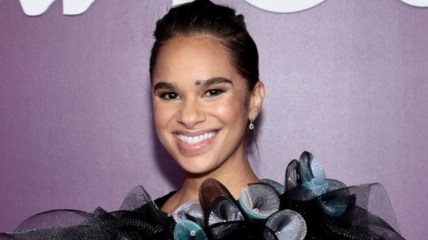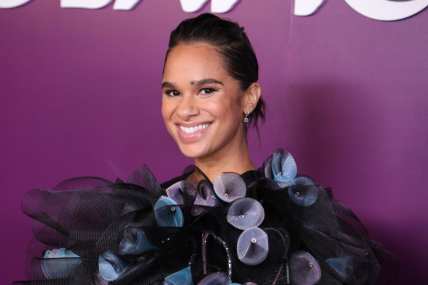The magic of Misty Copeland: 6 reasons the prima ballerina is always en pointe
The first Black woman promoted to principal dancer in the American Ballet Theatre, Misty Copeland is theGrio Awards’ 2023 Trailblazer Icon.
Considered a prodigy since she discovered ballet at age 13, Misty Copeland has danced across the world’s stages, performing alongside the Nutcracker Prince and the late musical icon Prince alike, and even hoofing it “On the Town” on Broadway. In 2015, Copeland made history as the first Black woman promoted to principal dancer in the 75-year history of the American Ballet Theatre (ABT) — and this fall, the prima ballerina blazed a new trail as she was named theGrio Awards’ 2023 Trailblazer Icon.

As not only a dancer but also an author, producer, and advocate, Copeland has broken barriers that will resonate for generations to come — while also shining a light on those who made her ascension possible. While she has many attributes to celebrate, here are a few reasons we find Misty Copeland so magical.
She believes Black dancers belong anywhere they want to be
“Throughout my career, like so many other Black dancers, people have wanted to push me toward modern dance, which is considered freer, wilder and therefore more suitable to someone of my heritage,” Copeland wrote in her most recent book. “Yet my dream was ballet from my first class at 13, wearing gym shorts on a basketball court at the Boys and Girls Club of San Pedro.”
“It’s no one’s place to tell me where I should dance, where I can succeed,” Copeland further explained on theGrio’s literary podcast, “Writing Black,” “I knew that I wanted to dance for ABT because of the repertoire; because I grew up looking at these dancers. And that was what I felt my position was — where I should be. And also, in order to really make real change in those spaces, I felt like I needed to be there. Whether it was going to happen for me or not, my presence there was going to make an impact for so many Black and brown people who were coming to see me,” she added.
She generously shares the spotlight
While Copeland has been widely heralded for her firsts, she consistently pays tribute to those who paved her way and those who will follow in her path. Recognizing how much representation mattered in her own life and career, her 2021 book “Black Ballerinas” celebrated other dancers of color — including predecessors, contemporaries and successors — who have influenced her on and off the stage. In 2022, she paid special homage to one of her mentors, Raven Wilkinson, as she partnered with another, Susan Fales-Hill, to write “The Wind at My Back: Resilience, Grace, and Other Gifts from My Mentor, Raven Wilkinson.”
“It’s just so meaningful to hear these stories and then to be able to be in a place where I can share the stories of so many Black women who weren’t given the opportunities that I was given and didn’t get a chance to even reach the level that I’m at,” Copeland told theGrio. “And Raven Wilkinson, you know, when I learned of her story … and learning that not a lot has changed from the 1950s and that it was my responsibility to push through, she’s passed me the torch to go all the way. And, you know, there’s so many Black women who have done this. And I feel, again, it’s my responsibility to tell their stories.”

She’s a prolific author
In addition to a groundbreaking career on stage, Copeland has published seven books since 2014, including a New York Times bestselling memoir, two award-winning children’s books, and even a health and fitness book. As she told theGrio, writing has long been another of her creative talents.
“Writing was probably one of my earliest outlets before ballet,” said Copeland, later adding, “That love, whether it’s reading books or doing the research I have to do to become a character that I’m performing on stage, I feel like they’re all so interwoven and connected. And I feel like with each book, I learn more about myself and kind of become more confident in who I am and who I want to be, which is a really amazing privilege.”
She calls out colorism in ballet and beyond
Copeland’s path to prima ballerina may have been improbable, but she readily acknowledges how, in addition to her undeniable talent, her lighter complexion likely eased her experience within the Eurocentric beauty standards of classical ballet. “Colorism is very real within the Black community and beyond. And it certainly has played a role in both Raven [Wilkinson]’s and my access and opportunity within ballet,” she told theGrio. “But of course, that does not exclude lighter-skinned Black people from discrimination or being considered ‘other.’ Black dancers are not a monolith.”
Combatting that othering includes refusing requests to lighten or obscure her racial identity. While Wilkinson refused to pass for white to succeed in her day, as previously reported by theGrio, Copeland has had to push back against the idea that certain characters should only be white.
“It’s been a reason for them to get away with [saying] why there’s only white people,” she explained in 2019. “Even the skin color of pointe shoes is called ‘European pink.’ That’s such a subtle way for brown people not to feel part of it.”

She has helped shift the paradigm for dancers’ bodies — starting with her own
In addition to being a Black dancer in the overwhelmingly white world of ballet, Copeland has been transparent about experiencing body issues as she tried to fit in — including developing a binge eating disorder following an injury during her early days at ABT.
“As a ballerina, you always stand in front of the mirror searching for flaws. You’re so used to criticism—from yourself and others—that it’s hard to remember that your body is something to enjoy, not just a never-ending fix-it project,” she noted in 2014.
With support from now-husband Olu Evans and a mentor, former ABT dancer-turned-actress Victoria Rowell, Copeland learned to appreciate her body for its power, grace — and yes, even its curves.
“My curves became an integral part of who I am as a dancer, not something I needed to lose to become one. I started dancing with confidence and joy, and soon, the staff at ABT began giving me positive feedback again,” she recalled. “And I think I changed everyone’s mind about what a perfect dancer is supposed to look like.”
She is fostering future generations of talent
Even while still actively engaged in multiple creative careers, Copeland, now mother to a young son, has her eyes on the future. Steadfast in her commitment to supporting young, often underserved talents like the one she once was, she has launched the Misty Copeland Foundation with the aim “to bring greater diversity, equity, and inclusion to dance, especially ballet” through mentorship and education.
“It makes all the difference when you have someone who looks at you in your eyes, who you can see yourself through, who talks to you like an equal. So, I understand the power of having that in one’s life,” Copeland told theGrio.
“It’s not just about bringing ballet to these communities so that they can go on to become the next Raven Wilkinson or Misty Copeland. But it’s to give them the tools to be leaders in their communities,” she later added. “It’s to show them that they can be a part of this craft, this art form, whether that is on the stage or behind the scenes, or eventually joining a board of directors, making real progress within these institutions. Starting them young, giving them the skills and the tools to go on to be great at whatever it is they want to do,” she continued, “to me, that’s the next step in my career and my impact on the ballet world.”
Maiysha Kai is theGrio’s lifestyle editor, covering all things Black and beautiful. Her work is informed by two decades of experience in fashion and entertainment, great books, and the brilliance of Black culture. She is also the editor-author of Body: Words of Change series and the host of ‘Writing Black‘ with Maiysha Kai.
Never miss a beat: Get our daily stories straight to your inbox with theGrio’s newsletter.
More About:TheGrio Awards Culture Watch Lifestyle








